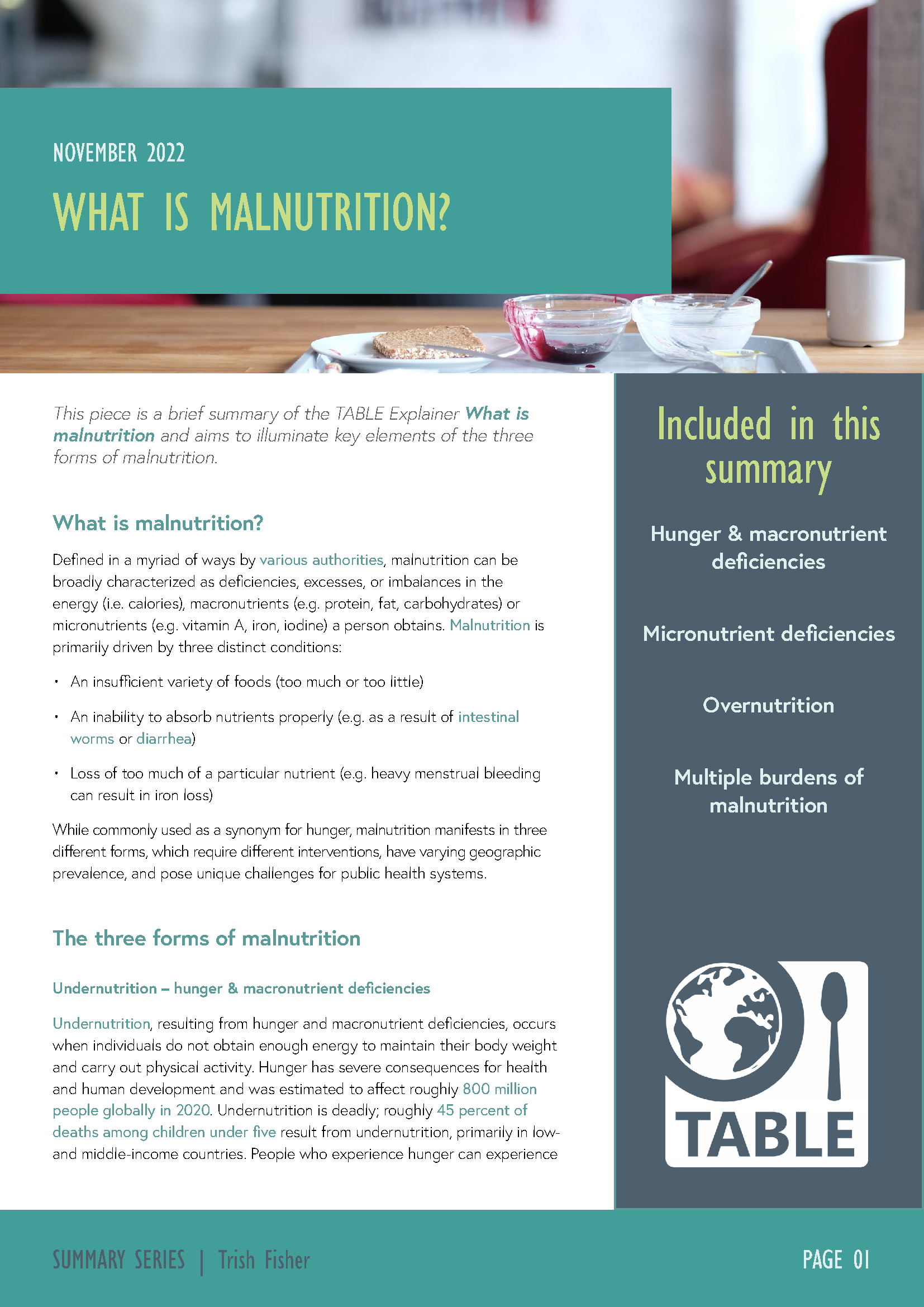The three forms of malnutrition
Undernutrition – hunger & macronutrient deficiencies
Undernutrition, resulting from hunger and macronutrient deficiencies, occurs when individuals do not obtain enoug energy to maintain their body weight and carry out physical activity. Hunger has severe consequences for health and human development and was estimated to affect roughly 800 million people globally in 2020. Undernutrition is deadly; roughly 45 percent of deaths among children under five result from undernutrition, primarily in low- and middle-income countries. People who experience hunger can experience wasting (i.e. a person is too thin for their height) or underweight (i.e. a person is significantly underweightfor their age). Stunting (i.e. when a person, typically a child, is too short for their age) can disrupt healthy brain development and thus have lifelong health, social, and economic consequences. Insufficient protein intake is estimated to affect roughly 12% of the global population and can lead to kwashiorkor (swelling under the skin and loss of muscle mass), marasmus (loss of fat and muscle), and sarcopenia (loss of muscle mass, particularly in older people). More broadly, undernutrition in the form of hunger and macronutrient deficiencies traps people in a cycle of poverty by affecting their educational attainment and ability to work.
Undernutrition – micronutrient deficiencies
Undernutrition in the form of micronutrient deficiencies is extremely widespread in both the Global North and the Global South. While there is limited comprehensive data on global prevalence, estimates suggest that over two billion people are affected. The impacts of micronutrient deficiencies depend on which micronutrient is lacking. For example, vitamin A deficiency can result in night blindness and immune system impairment, iodine deficiency can cause a goiter, and iron deficiency can contribute to certain types of anemia. Children and pregnant women in low- and middle-income countries are at particularly high risk of micronutrient deficiencies.
Overnutrition
Overnutrition is perhaps the most contested form of malnutrition. There is largely a consensus that excess calorie intake is a leading cause of overweight and obesity. However, debates regarding overnutrition center on the locus of responsibility. Traditional media and health narratives point to individuals’ dietary choices and sedentary lifestyles as the crux of the problem. This focus on the individual masks the larger, societal drivers such as the responsibility of the food industry and the failure of governments to effectively regulate the food environment.
Recently, alternative causal mechanisms of obesity have gained prominence, including genetics, gut microbiota, and hormonal responses to the consumption of certain foods. While there certainly is evidence that there are a number of biological factors that predispose individuals to overweight and obesity, these have existed in humans for centuries, if not longer. In contrast, the rise in overweight and obesity is very much tied to the rise of the modern food industry and increasingly sedentary lifestyles in the 20th century.
The prevalence of overweight and obesity globally has tripled since 1975; the World Health Organization estimates that roughly two billion people globally are overweight or obese. Body mass index is positively associated with risk for various non-communicable diseases including heart disease, stroke, some cancers, type 2 diabetes, and musculoskeletal disorders. Beyond the direct health risks, weight bias/stigma can have severe consequences for people with overweight or obesity, including discrimination, bullying, avoidance of healthcare services, lower wages, and social isolation.







Comments (0)